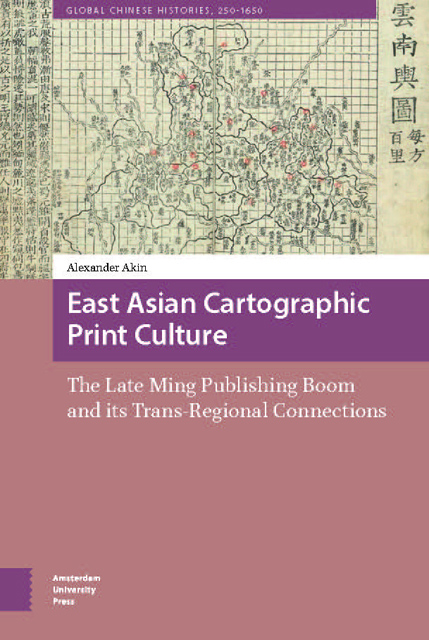 East Asian Cartographic Print Culture
East Asian Cartographic Print Culture Published online by Cambridge University Press: 12 January 2023
The land and the sea are basically round in shape, and together they form a globe, which is situated in the celestial sphere like the yolk of a chicken’s egg is suspended in the white. It has been said that the earth is ‘fang (方),’ but this refers to its being fixed and immobile, not to a [square] shape.
The heavens envelop the earth and they mutually correspond. Therefore the heavens have two poles, south and north, and the earth does as well. The heavens are divided into 360 degrees, and the earth is too. In the middle of the heavens lies the [celestial] equator. South from the equator 23.5 degrees lies the Tropic of Capricorn, while 23.5 degrees to the north of the equator lies the Tropic of Cancer. Thus, the Middle Kingdom is north of the Tropic of Cancer.
When the sun moves over the equator, day and night are equal. When it moves south of the equator, the day is shorter. When it moves north of the equator, the day is longer. Thus the celestial sphere has an equator in the middle, and two circles of short day (Tropic of Capricorn) and long day (Tropic of Cancer) to the south and north, determining the way the sun circumnavigates the terrestrial globe in its orbit. Likewise, the globe of earth has three corresponding lines. However, the heavens are deep and vast as they envelop the earth and extend outward, while the earth, being situated within the heavens, is very small and constricted. In this respect alone they differ.
Investigation shows that for someone walking due north, each 250 li traveled brings the north pole higher by one degree and the south pole lower by one degree. Walking due south, each 250 li traveled brings the north pole lower by one degree and the south pole higher by one degree. This proves not only that the form of the earth is round, but furthermore that 250 li equal one degree. Thus one circuit of the earth, whether going east-west or north-south, in fact adds up to 90,000 li. Whether going north-south or east-west, they are equivalent with no objective difference.
To save this book to your Kindle, first ensure no-reply@cambridge.org is added to your Approved Personal Document E-mail List under your Personal Document Settings on the Manage Your Content and Devices page of your Amazon account. Then enter the ‘name’ part of your Kindle email address below. Find out more about saving to your Kindle.
Note you can select to save to either the @free.kindle.com or @kindle.com variations. ‘@free.kindle.com’ emails are free but can only be saved to your device when it is connected to wi-fi. ‘@kindle.com’ emails can be delivered even when you are not connected to wi-fi, but note that service fees apply.
Find out more about the Kindle Personal Document Service.
To save content items to your account, please confirm that you agree to abide by our usage policies. If this is the first time you use this feature, you will be asked to authorise Cambridge Core to connect with your account. Find out more about saving content to Dropbox.
To save content items to your account, please confirm that you agree to abide by our usage policies. If this is the first time you use this feature, you will be asked to authorise Cambridge Core to connect with your account. Find out more about saving content to Google Drive.